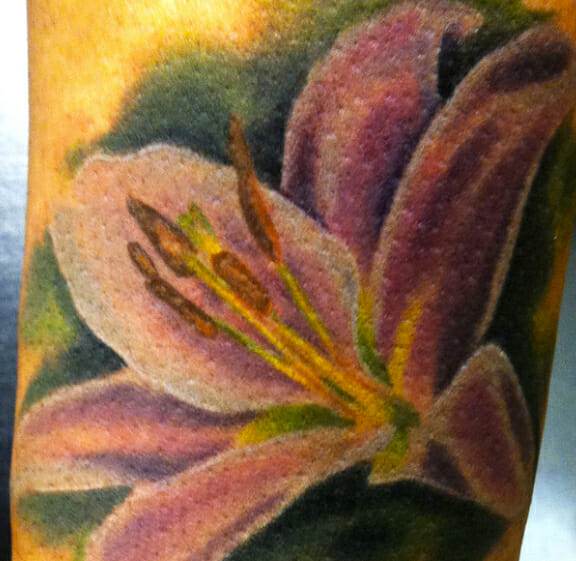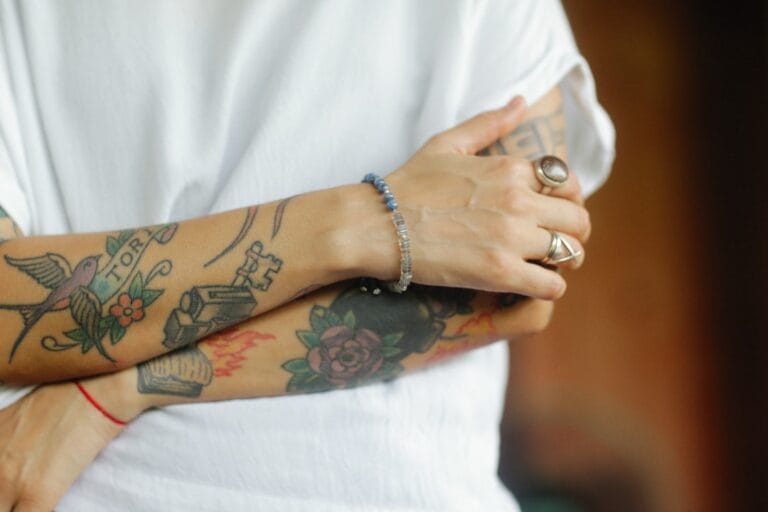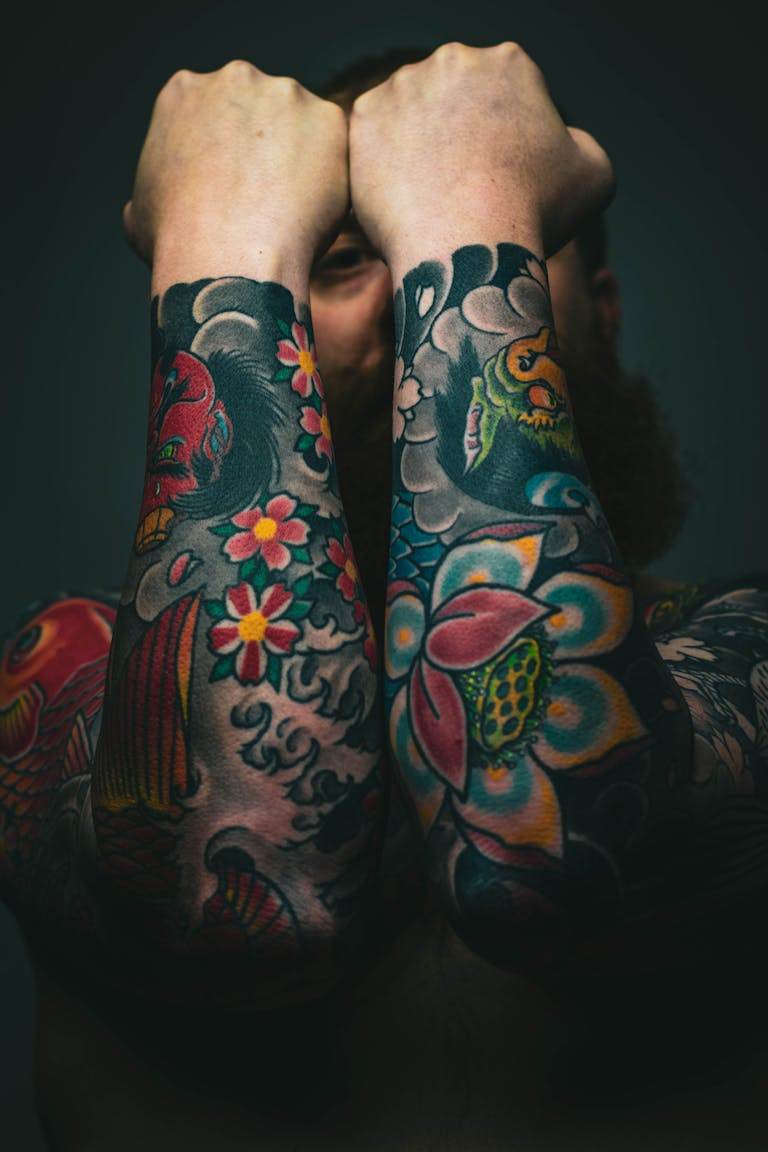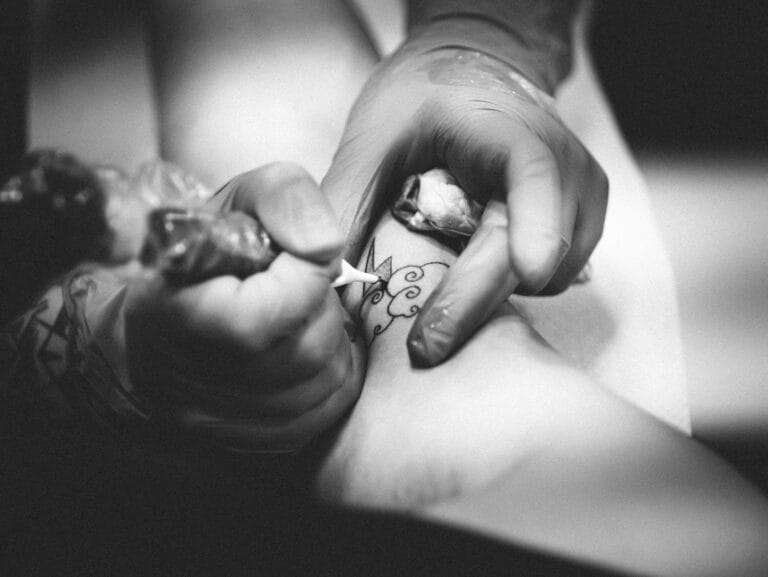
Japanese tattooing, also known as irezumi, has a rich history that dates back thousands of years. It is believed to have originated in the Jomon period (10,000 BCE – 300 BCE), where tattoos were used for spiritual and decorative purposes. However, it was during the Edo period (1603-1868) that tattooing became more prevalent and developed into a distinct art form.
Traditional Japanese tattoo design is characterized by its bold and intricate designs, often featuring mythical creatures, deities, and natural elements. These designs are heavily influenced by Japanese folklore, mythology, and religious beliefs. Some common elements found in traditional Japanese tattoos include dragons, phoenixes, cherry blossoms, and waves.
The Significance of Water in Japanese Culture
Water holds great importance in Japanese culture, both in mythology and daily life. In Shintoism, the indigenous religion of Japan, water is considered a purifying element and is used in various rituals and ceremonies. It is believed to cleanse the body and soul, and is often used in purification rituals before entering shrines or temples.
Water also plays a significant role in Japanese mythology. The creation myth of Japan tells the story of how the gods Izanagi and Izanami created the islands of Japan by stirring the ocean with a spear. Water is seen as a life-giving force and is associated with creation and rebirth.
In daily life, water is highly valued in Japan for its cleanliness and purity. The country has a strong tradition of bathing, with public baths known as onsen being popular throughout the country. The act of bathing is seen as not only a way to cleanse the body but also to relax and rejuvenate the mind.
The Symbolism of Waves in Japanese Art
Waves hold deep symbolism in Japanese art and culture. In traditional Japanese art, waves are often depicted as powerful and dynamic, representing the force of nature. They are seen as a symbol of strength, resilience, and the ever-changing nature of life.
The depiction of waves in Japanese art is influenced by the belief in the power of the ocean. Japan is an island nation surrounded by the sea, and its people have a deep respect for the ocean and its unpredictable nature. Waves are often portrayed with a sense of movement and energy, capturing the essence of the ocean’s power.
In addition to their symbolic meaning, waves are also aesthetically pleasing and visually striking. The flowing lines and curves of waves make them a popular subject in Japanese art, and they are often used to create dynamic compositions.
The Role of Water in Japanese Tattoo Design
Water is a fundamental element in traditional Japanese tattoo design. It is often used to create a balanced composition and to enhance the overall aesthetic of the tattoo. Water can be depicted in various forms, such as waves, rivers, waterfalls, or even rain.
In Japanese tattoo design, water is often used as a background element to complement other design elements. It can be used to create movement and flow within the tattoo, adding depth and dimension to the overall design. Water is also used to create contrast and balance within the tattoo, as it is often paired with other elements such as dragons or koi fish.
Water is also used symbolically in Japanese tattoo design. It represents purification, cleansing, and renewal. It is believed to have the power to wash away impurities and bring about positive change. Water tattoos are often chosen by individuals seeking transformation or a fresh start in life.
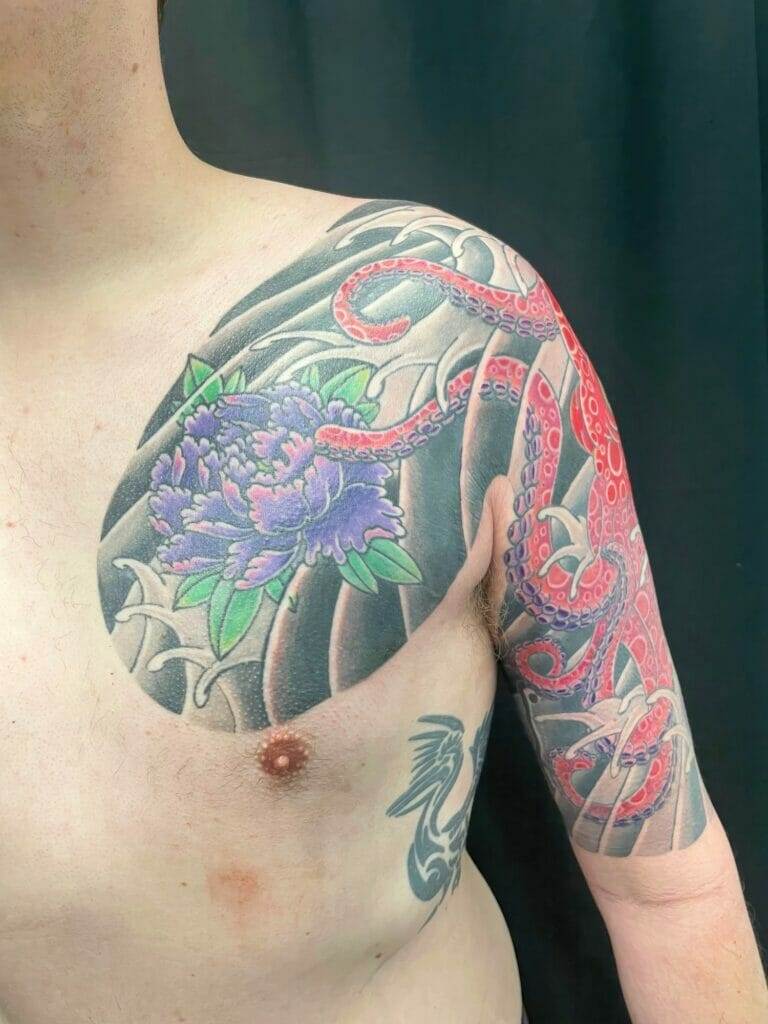
Different Types of Water Depicted in Japanese Tattoos
Japanese tattoos often depict different types of water, each with its own symbolic meaning. Some common types of water depicted in Japanese tattoos include:
1. Ocean: The ocean represents vastness, power, and the unknown. It symbolizes the journey of life and the challenges that one must overcome. Ocean tattoos are often chosen by individuals seeking strength and resilience.
2. River: Rivers are seen as a source of life and nourishment. They represent the flow of time and the cyclical nature of life. River tattoos are often chosen by individuals seeking balance and harmony in their lives.
3. Waterfall: Waterfalls are associated with power, energy, and transformation. They represent the ability to overcome obstacles and bring about positive change. Waterfall tattoos are often chosen by individuals seeking personal growth and self-improvement.
The Meaning Behind Japanese Wave Tattoos

Wave tattoos hold great significance in Japanese culture. They are often associated with the power of the ocean and the ever-changing nature of life. Waves can represent a variety of meanings, depending on their size, shape, and context.
In Japanese culture, waves are seen as a symbol of strength, resilience, and adaptability. They represent the ability to overcome challenges and navigate through the ups and downs of life. Waves can also symbolize the ebb and flow of emotions, reminding us that life is constantly changing.
Wave tattoos can also have a more personal meaning for individuals. They can represent a connection to nature, a love for the ocean, or a desire for change and transformation. Some people choose wave tattoos as a reminder to go with the flow and embrace the unpredictability of life.
The Significance of Koi Fish in Japanese Tattooing
Koi fish hold great cultural significance in Japan and are often incorporated into Japanese tattoo designs. In Japanese folklore, koi fish are seen as symbols of perseverance, determination, and success. They are known for their ability to swim against strong currents and overcome obstacles.
Koi fish tattoos are often chosen by individuals seeking personal growth and transformation. The fish’s journey from a small, humble creature to a majestic and powerful being is seen as a metaphor for one’s own journey in life. Koi fish tattoos are often depicted swimming upstream, symbolizing the ability to overcome challenges and achieve success.
In addition to their symbolic meaning, koi fish are also visually striking and aesthetically pleasing. They are often depicted in vibrant colors and intricate designs, making them a popular subject in Japanese tattoo art.
The Connection Between Water and Samurai Culture
Water holds great significance in samurai culture, as it is associated with the virtues of strength, discipline, and purity. Samurai warriors were trained to be like water – adaptable, flexible, and able to flow with the situation. Water was seen as a symbol of their strength and resilience.
Water is also depicted in samurai art and literature as a source of purification and cleansing. Samurai warriors would often perform ritual purification before battle, using water to cleanse their bodies and minds. Water was seen as a way to wash away impurities and prepare oneself for the challenges ahead.
In samurai art, water is often depicted in the form of waves or flowing rivers. These depictions symbolize the fluidity of the samurai’s movements and their ability to adapt to any situation. Water is also used to create a sense of movement and energy within the artwork, capturing the dynamic nature of the samurai’s actions.
The Evolution of Japanese Tattoo Design and Its Relationship to Water
Japanese tattoo design has evolved over time, reflecting changes in society, culture, and artistic styles. In the past, tattoos were primarily associated with criminals and outcasts in Japanese society. However, during the Edo period, tattoos became more popular among the working class and were used as a form of self-expression.
During this time, traditional Japanese tattoo design began to emerge as a distinct art form. Artists started incorporating elements from Japanese folklore, mythology, and nature into their designs. Water became a popular motif in tattoo design, representing strength, resilience, and the ever-changing nature of life.
In recent years, Japanese tattoo design has gained international recognition and popularity. Many tattoo artists around the world have been inspired by traditional Japanese tattooing techniques and incorporate water symbolism into their designs. Water tattoos are often chosen by individuals seeking a connection to nature, a sense of balance, or a reminder of the power of change.
The Future of Japanese Tattooing and Its Continued Use of Water Symbolism
Japanese tattooing continues to evolve and adapt to modern times. While traditional Japanese tattoo design remains popular, there is also a growing trend towards more contemporary and abstract designs. Tattoo artists are experimenting with new techniques, styles, and subject matter, while still incorporating elements of traditional Japanese tattooing.
Water symbolism is likely to continue playing a significant role in Japanese tattoo design. The symbolism of water – its power, purity, and ability to bring about change – resonates with many people seeking tattoos that hold deep meaning. As long as water remains an important element in Japanese culture and mythology, it will continue to be a popular choice for those seeking Japanese-inspired tattoos.
In conclusion, Japanese tattoo design is a rich and complex art form that has deep roots in Japanese culture and history. Water holds great significance in Japanese culture, both in mythology and daily life. It is often used symbolically in Japanese tattoo design to represent purification, cleansing, and renewal. Different types of water, such as waves, rivers, and waterfalls, are depicted in Japanese tattoos, each with its own symbolic meaning. Wave tattoos are particularly popular and represent strength, resilience, and the ever-changing nature of life. Koi fish are also commonly incorporated into Japanese tattoo designs, symbolizing perseverance and success. Water is also closely associated with samurai culture, representing strength, discipline, and purity. Japanese tattoo design has evolved over time but continues to incorporate water symbolism as a way to create balance and enhance the overall composition of the tattoo. The future of Japanese tattooing is likely to continue incorporating water symbolism, as it holds deep meaning and resonates with individuals seeking tattoos that represent personal growth and transformation.
If you’re interested in exploring the deep symbolism behind Japanese tattoo design, you might also enjoy reading about the ultimate guide to getting a couples tattoo at Redemption Ink. This article delves into the bond shared by couples who choose to get matching tattoos and provides valuable insights for those considering this meaningful expression of love and commitment. Discover more about this fascinating topic here.


